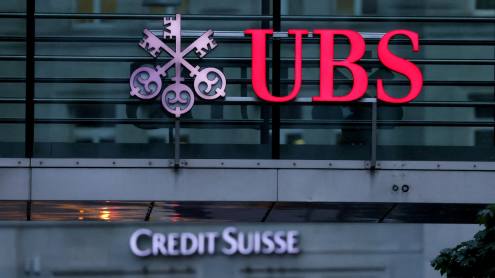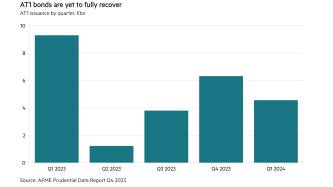Crédit Agricole remains an unusual candidate for a global bank with the world’s 15th largest capital base in 2010. At one end of the scale, the bank is built from an agglomeration of provincial mutual banks with a traditional presence in rural France. At the other end of the scale, it operates an investment bank that is pushing hard to expand business in China.
Jean-Paul Chifflet, who rose from a sales role in the group’s south-west regional bank to become CEO in March 2010, believes the contrast between French mutualism and international capitalism is precisely the source of the bank’s strength.
“When the bank set sail, we knew there would be storms as well as adventure, but it has been a rapid evolution over the past 10 years, and we understood that the world is opening up – we needed to open up too,” says Mr Chifflet.
Editor's choice
Foreign adventures
One of those foreign adventures is making the right headlines at the moment. Crédit Agricole is preparing to merge its European brokerage unit CLSA with its main brokerage Cheuvreux in the coming months, and announced in June that Chinese brokerage Citic Securities is set to take a 19.9% stake in the combined entity for about $374m. Citic itself is planning a listing for about $2bn on the Hong Kong stock exchange in October 2011.
“It took several months of discussions and we are very pleased to have a partner to expand our brokerage network in Asia where we already have a good presence,” says Mr Chifflet.
The bank’s emerging market presence may also prove important for other reasons. Mr Chifflet spoke to The Banker just before ratings agency Moody’s downgraded Crédit Agricole in September 2011 and the European Central Bank (ECB) began providing dollar liquidity to eurozone banks. But even then, he remarked on the pull-back of US money-market funds from financing eurozone banks, and he emphasised that Crédit Agricole’s presence in Asia and the Middle East was providing it with an alternative source of dollar deposits.
Funding conditions tighten
The two main justifications for the Moody’s downgrade were Crédit Agricole’s relative dependence on short-term liquidity and its heavy exposure to Greece via its subsidiary Emporiki. According to Moody’s financial institutions analyst, Nicholas Hill, the bank’s “wholesale funding, the majority of which is short term, is still high in absolute terms and may pose a vulnerability given considerable market tension”.
However, bank equity analyst Anke Reingen at investment bank RBC Capital Markets in London has calculated that Crédit Agricole’s wholesale funding as a proportion of adjusted liabilities is significantly lower than the other two major French banks, BNP Paribas and Société Générale, at 59% (or 54% excluding repurchasing agreements).
Credible position
Mr Chifflet says funding costs are indeed rising, but the bank still has substantial liquidity reserves and the means to borrow at the ECB. Crédit Agricole has about €81bn in ECB repo-eligible assets, plus another €42bn in liquid assets.
The ECB’s reopening of dollar repo facilities provides an extra layer of liquidity insurance for French banks. In its second-quarter results, Crédit Agricole disclosed $36bn in financing from US money-market funds.
[Crédit Agricole] has taken steps to master its own destiny
In addition, Mr Chifflet says the bank will continue to benefit from the deposit base provided by its vast domestic network – it is the leading French retail banks by customer deposits. While he is awaiting a clearer plan of action on public debt like the CEO of every other major bank in the eurozone, Mr Chifflet says Crédit Agricole has “taken steps to master its own destiny”.
Pain in Greece
The bank took write-downs totalling €507m on Emporiki in the second quarter of 2011. It also took a further €202m on its exposure to Greek government bonds, based on its participation in the private sector burden-sharing deal, due to close in September 2011.
Despite these impairments, Crédit Agricole recorded net profits of €881m in the second quarter. Moody’s concluded that, even in a severe scenario of 60% losses on its exposure to Greek government debt, 50% each for Portugal and Ireland, 10% on Spain and 7% on Italy, the total loss to the bank would be €1.5bn, or just 2% of its core Tier 1 equity.
Emporiki has suffered deposit outflows, although Mr Chifflet says it actually gained market share in Greek deposits because the decline was less severe than in the wider market. Even so, he accepts that Emporiki itself is at the mercy of currently faltering decision-making by eurozone governments. He says a turnaround could start anywhere between 2012 and 2014, and the fiscal austerity plan is likely to keep economic growth weak for some time.
“Emporiki ran almost an open-door policy on lending in 2006 to 2008, which was only normalised after we centralised credit controls. But we have now provisioned a lot of that older vintage and written goodwill down to zero. The position is stabilising and we should be ready to benefit from any upturn,” says Mr Chifflet.
Banking model
The other aspect of Crédit Agricole’s business that has undergone significant overhaul is its corporate and investment banking (CA-CIB) unit. The bank took a hit of €553m on discontinued CA-CIB operations in 2008 and Mr Chifflet says it has now completed the winding-down of its credit derivatives business.
While the UK’s Independent Commission on Banking may have recommended ring-fencing between retail and investment banks, Crédit Agricole’s model currently appears to be heading in the opposite direction. In September 2011, Moody’s indicated that it might impose a two-notch differential between Crédit Agricole's parent group rating and the CIB’s rating.
A pure internet bank model could never work for us. The branch network is too important for our operations because so many of our customers want a local banker that they can do business with
To avoid CA-CIB having a lower rating, Crédit Agricole announced that it was preparing a “formal support mechanism on behalf of CA-CIB by Crédit Agricole, in the form of a general guarantee or through the affiliation of CA-CIB by Crédit Agricole”, to take effect by December 2011.
How Mr Chifflet may feel about having to extend this guarantee is unclear. He says the CIB provides about 15% of the group’s overall revenues, its services are “indispensable for large corporates” and its activities are now focused on facilitating real economic activity. With his background in the regional mutual banks, he emphasises the importance of running a stable universal bank model.
“Over time, universal banks have shown similar return on equity to investment banks, but with less volatility. And when return on equity is calculated, of course it excludes the investment banks that have disappeared altogether,” he says.
Back to the future
The provincial retail banking business remains at the heart of Mr Chifflet’s vision and with good reason, given the degree of customer loyalty. The bank can count an average of seven products per retail customer, a figure to make most European retail banking CEOs envious. And he anticipates more to come.
“Our customers are increasingly demanding products related to saving for their pensions and long-term healthcare, as we know that European governments are trying to reduce their own burden related to the costs of these items,” says Mr Chifflet.
Given this focus on, and indeed majority ownership by, the regional banks, the kind of large-scale branch network rationalisation seen among other European giants would be unthinkable for Crédit Agricole. Mr Chifflet speaks of local branches as the economic rallying-point for many French towns and villages.
“A pure internet bank model could never work for us. The branch network is too important for our operations because so many of our customers want a local banker that they can do business with,” he says.
Even so, the bank is rebuilding its multi-channel platform with a deadline of 2013 and a view to making internet and mobile banking an equal part of the model. And one part of Crédit Agricole already operates a pure online model. BforBank, Crédit Agricole’s private banking and wealth management arm, provides an online portal for bank transactions and securities investing for international customers, with partners in 74 countries.












